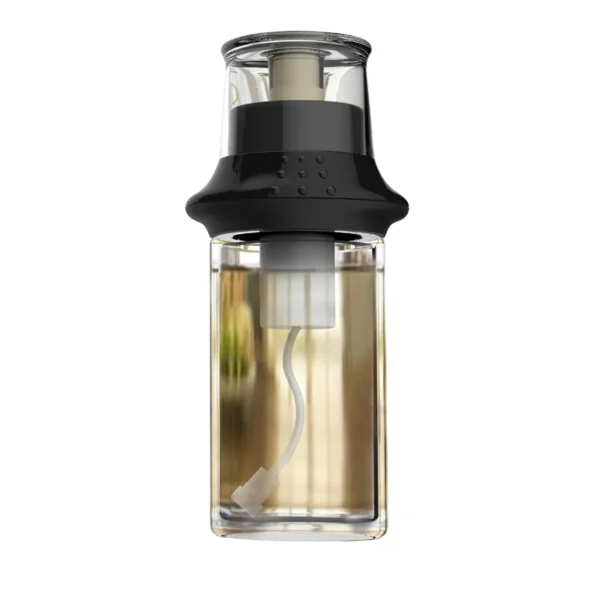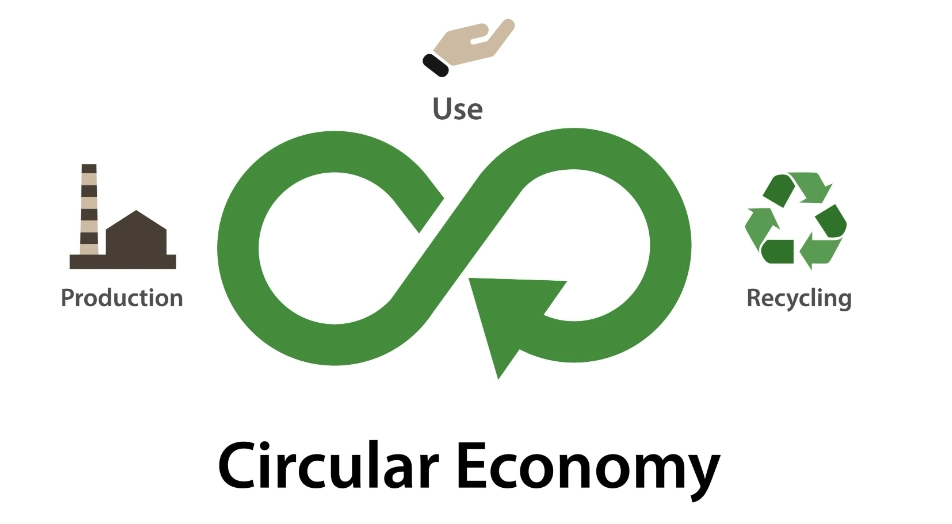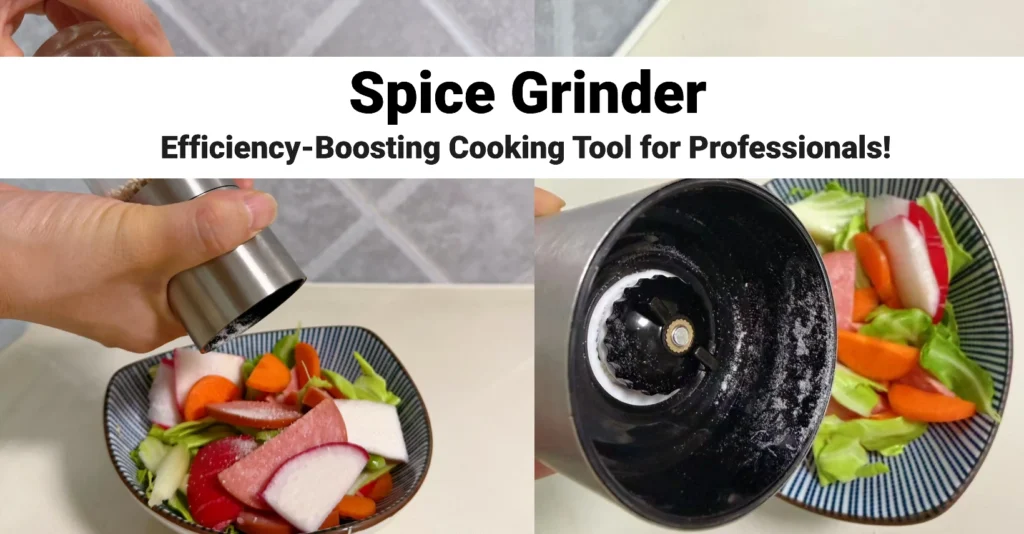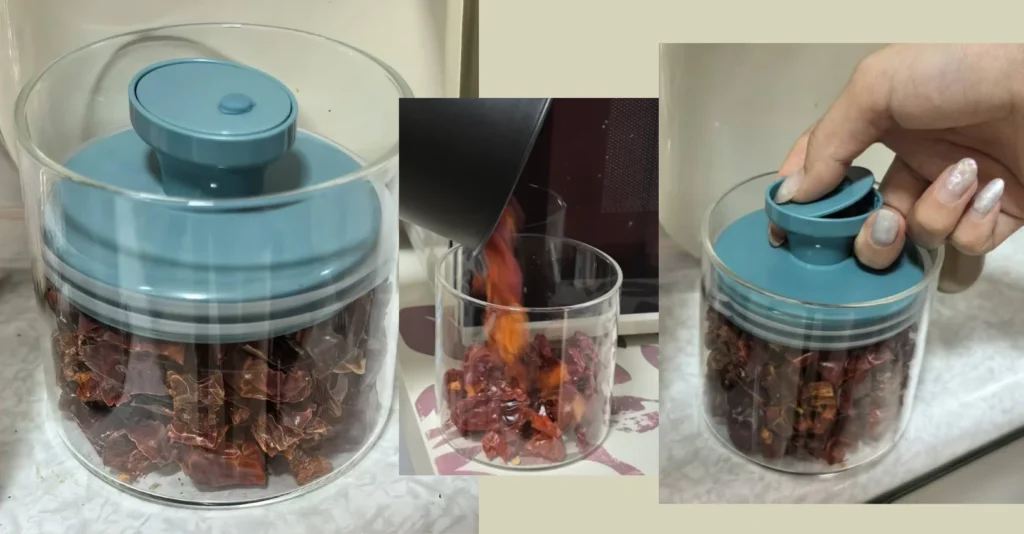Tired of pouring too much oil, creating a greasy mess, and guessing at portion sizes? You’re not alone. We’ve all been there—that heavy-handed pour that turns a healthy meal into a calorie bomb. But what if there was a simple tool that could solve all these problems? Enter the cooking oil spray bottle.
This guide on cooking oil in spray bottle will help you to completely understand, choose and use an oil spray bottle to transform the way you cook. We’ll cover everything from how it works to the best oils to use and how this simple kitchen gadget can make a huge impact on your health and your wallet.
What is a Cooking Oil Spray Bottle and How Does it Work?
A cooking oil spray bottle is a reusable, non-aerosol dispenser that converts your favorite cooking oil into a fine, even mist. Unlike disposable cans that rely on chemical propellants, a refillable spray bottle uses air pressure to work its magic.
The most common type uses a pressurized pump system. You simply fill the bottle with oil, then manually pump the cap to build air pressure inside. When you press the nozzle, the pressure forces the oil through a tiny, specially designed opening, atomizing it into a light, uniform spray. This method gives you total control, ensuring you use just the right amount of oil every time.
Why Use a Cooking Oil Spray Bottle in Our Kitchen?
Health & Wellness (Portion Control)
The most significant benefit is portion control. A single pour from a bottle can easily be a tablespoon (about 120 calories) or more, while a single spray from an oil sprayer is a much smaller, more controlled amount, containing a fraction of the calories. By allowing you to apply a minimal, consistent layer of oil, a spray bottle drastically reduces the amount you use in cooking. This helps cut down on calories and fat, making your meals healthier without sacrificing flavor or quality.
Practicality & Convenience (Even Application)
Say goodbye to greasy hands and sticky bottles. A spray bottle eliminates mess and provides a perfectly even coat on pans, grills, and food. This uniform coverage is essential for many cooking methods. For high-heat cooking and baking, it prevents food from sticking without requiring an excessive amount of oil. This not only makes cooking easier but also ensures a better final product, from perfectly roasted vegetables to evenly seared meats.
Cost-Effective & Eco-Friendly
By using less oil with each meal, your bottles of oil last much longer, saving you money over time. Furthermore, using a reusable bottle reduces waste and eliminates the need for expensive, single-use aerosol cans that contribute to landfill waste. This makes a refillable oil sprayer a more sustainable and environmentally conscious choice in the long run.
Avoiding Unhealthy Additives
This point is a key distinction between refillable oil sprayers and commercial aerosol cooking sprays. Many commercial aerosol sprays contain propellants like butane or propane, as well as other additives. While these are generally recognized as safe for consumption, a refillable oil sprayer allows you to use pure, unadulterated oil of your choice, free from any of these chemicals.
Choosing the Right Cooking Oil Spray Bottle
With so many options, how do you pick the best one? Consider these factors:
Material: Glass is a popular choice because it’s durable and won’t absorb flavors or chemicals. Stainless steel is also excellent for protecting oil from light, which can help it last longer.
Mechanism: Most home sprayers are either pump-pressurized (for a consistent mist) or a simple trigger sprayer (good for quick bursts).
Nozzle: A quality nozzle should provide a fine, even mist. Some models even have an adjustable nozzle to switch between spray and stream.
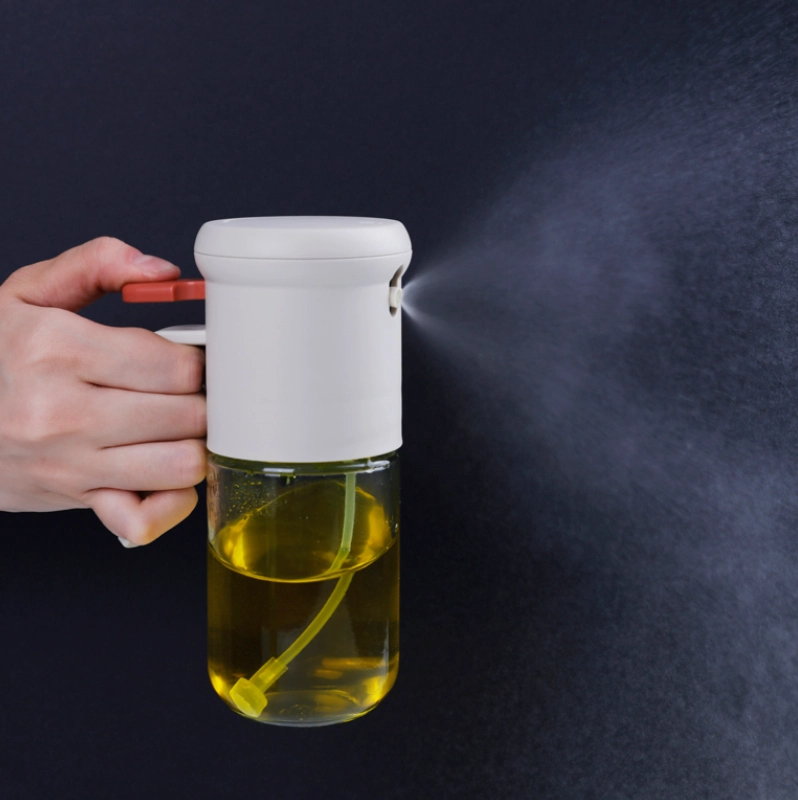
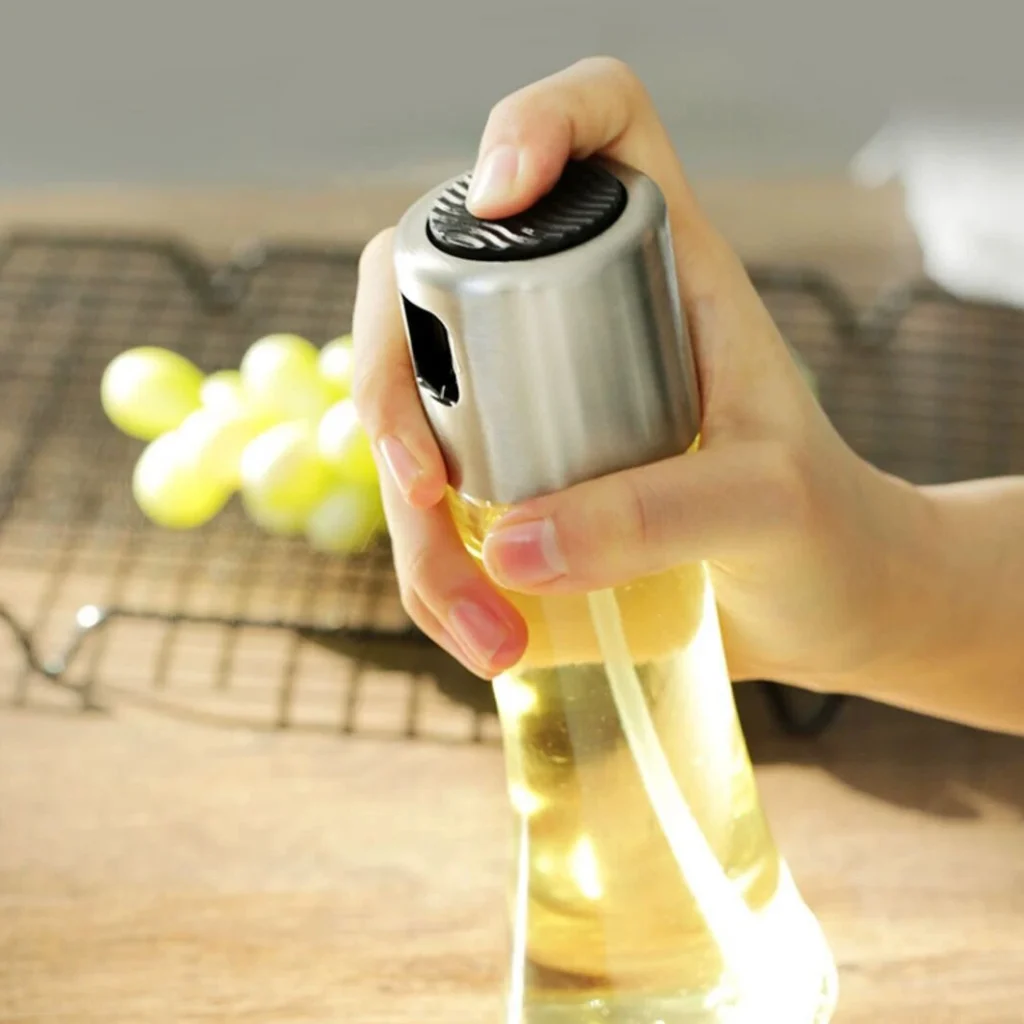
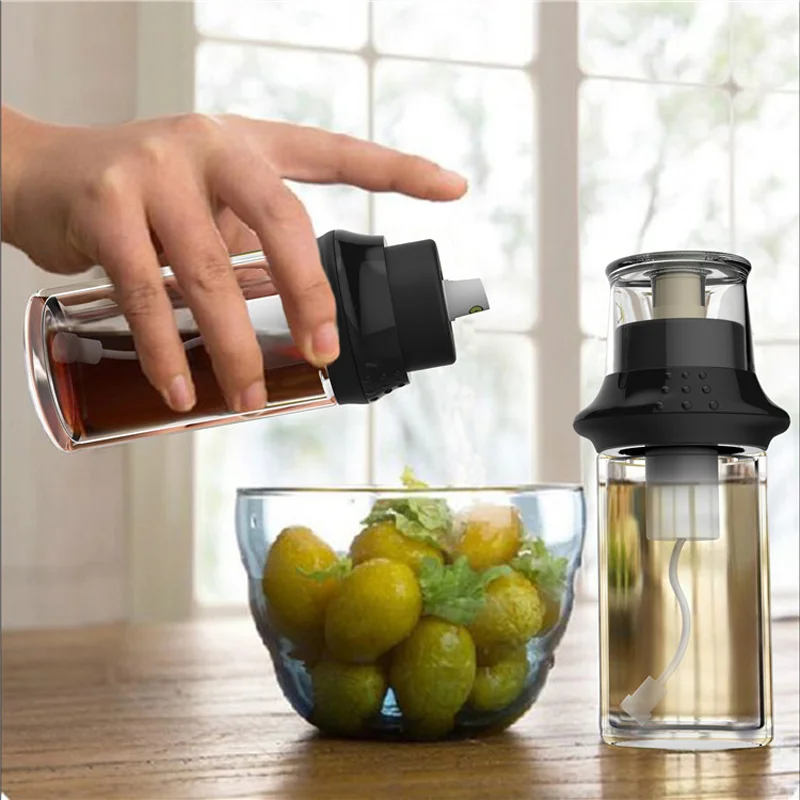
I sincerely recommend EasyLife’s oil spray bottle to you. We have our own factory. Therefore, we can strictly control the quality and delivery time of each product to ensure that our products are safe and non-toxic.
And we have our own product R&D department, no matter what your product needs or functional ideas, we can meet your needs.
Choosing the Right Cooking Oil in Spray Bottle
The type of oil you use can impact your sprayer’s performance. The general rule is: thinner oils work best. Avoid very thick oils or those that are solid at room temperature, as they can clog the nozzle.
Best for High-Heat Cooking: For sautéing, roasting, and air frying, choose oils with a high smoke point.
- Avocado Oil (very high smoke point)
- Grapeseed Oil (light and neutral)
- Refined Olive Oil (different from extra virgin)
- Canola or Sunflower Oil
Best for Finishing or Low-Heat: For salads or a final flourish on a dish, you can use oils with a lower smoke point.
- Extra Virgin Olive Oil: Perfect for misting over salads or dipping bread. Just be mindful not to use it for high-heat cooking.
Oils to Avoid (or Use with Caution):
- Coconut Oil: It solidifies below 76°F (24°C), which will clog your sprayer. If you absolutely want to use coconut oil, opt for a “fractionated” version, which remains liquid.
- Oils with solids: Avoid oils infused with herbs, garlic, or other solids, as they will quickly block the nozzle.
How to Use and Maintain Your Oil Spray Bottle
Using your bottle is simple, and learn how to clean the olive oil spray bottle can go a long way.
- Step 1: Fill it up: Use a small funnel to pour your chosen oil into the bottle. Don’t overfill it.
- Step 2: Pump it up: For pressurized models, pump the cap a few times to build pressure. You’ll feel it get firmer. If it is a simple trigger sprayer, you can use it directly.
- Step 3: Spray: Hold the bottle upright and press the button for a fine mist.
- Step 4: Clean it: To prevent clogging, clean your bottle every few weeks. Simply fill it with warm, soapy water, pump, and spray to flush out the system. For a deeper clean, you can use a bit of vinegar.
Practical Applications: 8 Ways to Use an Oil Sprayer
Did you get the fuel spray bottle, but I don’t know what other use it is besides stir-frying? This kitchen tool is not just as simple as applying oil pans. Here are 8 practical ways to use an oil sprayer to make your time in the kitchen easier and healthier.
- For Frying & Sautéing: This is the most common use. A few quick spritzes on your skillet or frying pan is all you need to prevent food from sticking. This ensures you use the perfect amount of oil for a light fry, rather than a heavy, greasy one.
- For Roasting Vegetables: For perfectly crispy roasted vegetables, an oil sprayer is a game-changer. Simply toss your chopped veggies on a baking sheet, then mist them evenly with oil. This ensures every piece is coated, leading to a golden-brown, crispy finish without them being drenched in oil.
- For Air Fryers: An air fryer’s magic lies in its ability to circulate hot air, but a little oil is often needed to get that desirable crispy texture. A quick spray of oil on your food before air frying guarantees an even coat that helps achieve that perfect crunch without the deep-frying mess.
- For Grilling: Before placing food on the grill, a light spray of oil on the grates prevents sticking and makes flipping easier. You can also lightly mist your meats and vegetables directly before they go on the grill for a beautiful sear.
- For Baking: Use your sprayer to quickly and evenly grease cake pans, muffin tins, and baking sheets. It’s much faster and cleaner than using a brush or a paper towel, ensuring every corner is coated for a clean release.
- For Salads and Finishes: For a light, healthy salad dressing, simply mist extra virgin olive oil directly over your greens. You get the flavor of a high-quality oil without the heavy pour. It’s also perfect for giving finished dishes, like pasta or bruschetta, a beautiful, glossy shine.
- For Popcorn: Making stovetop popcorn? Instead of pouring oil into the pot, spray it lightly over the unpopped kernels. This gives you just enough oil for the popping process while making your snack much lighter.
- For Leftovers: If you’re reheating pizza or other leftovers in a skillet, a quick spritz of oil will help revive the crust and prevent it from sticking, giving you that fresh-out-of-the-oven feel.
FAQ about the Olive Oil Spray Bottle
Can you put oil in a spray bottle?
It’s definitely possible to use a spray bottle for cooking oil, but success depends on a few key factors. Unlike a regular household spray bottle designed for water, you’ll need a specialized “oil mister” or “sprayer” which features a pressurized pump system to properly atomize the thicker liquid into a fine mist. While most common cooking oils like olive, avocado, or grapeseed oil work perfectly, it’s best to avoid thicker oils or those that solidify, such as coconut oil, as they will quickly clog the nozzle. To keep your sprayer in top condition, routine cleaning with hot, soapy water is a must, ensuring you always get an even, controlled spray.
Conclusion
A cooking oil spray bottle is a simple, affordable, and incredibly effective tool that can transform your cooking habits. It’s a smart investment that promotes healthier eating, saves you money, and reduces kitchen waste.
Ready to make the switch and take control of your cooking? Grab a spray bottle and see the difference for yourself!

